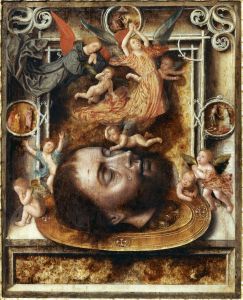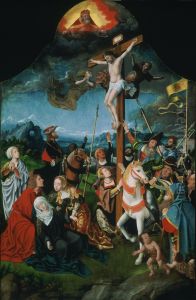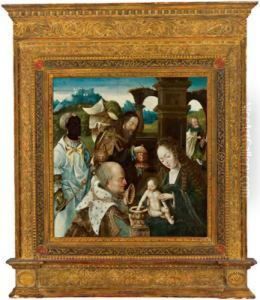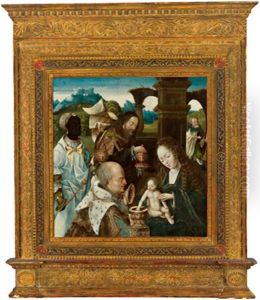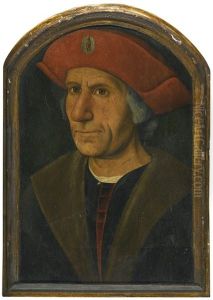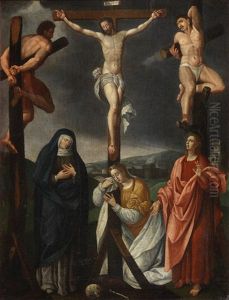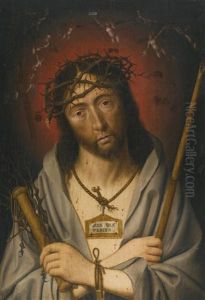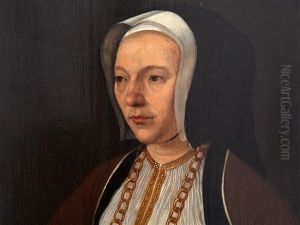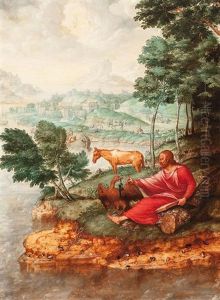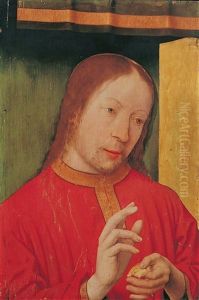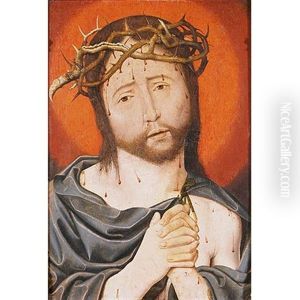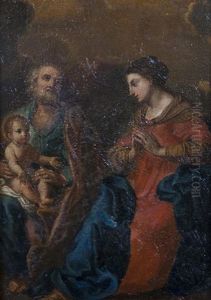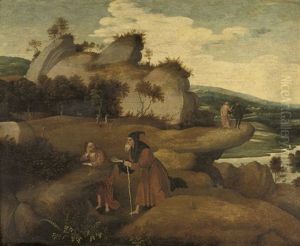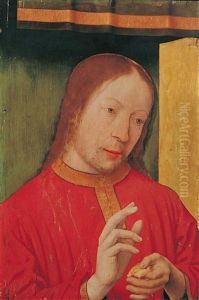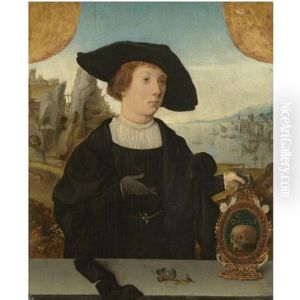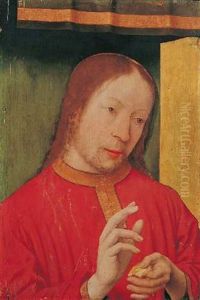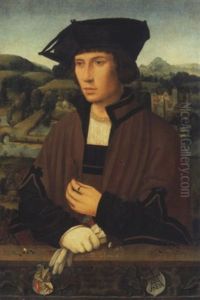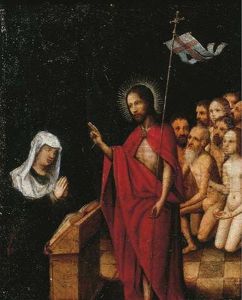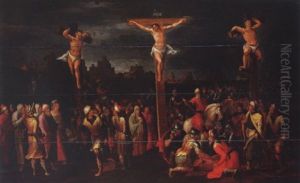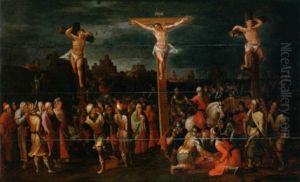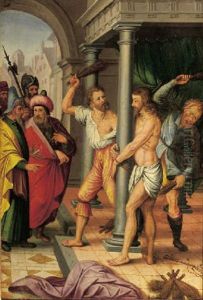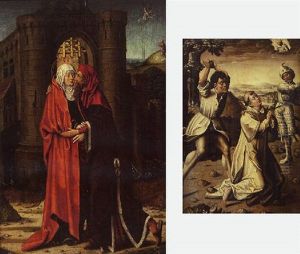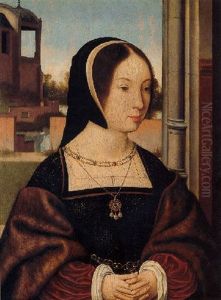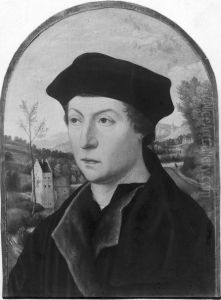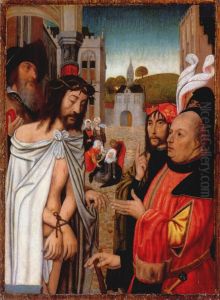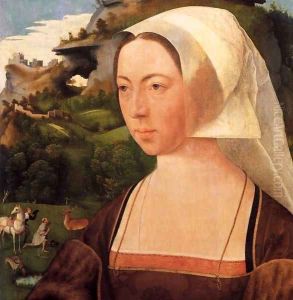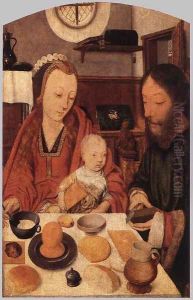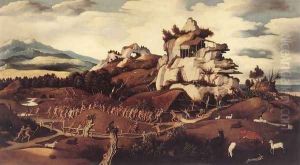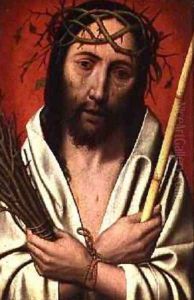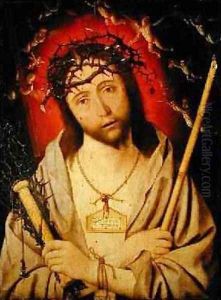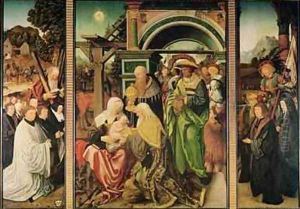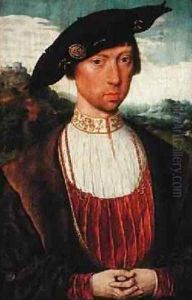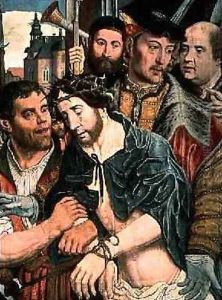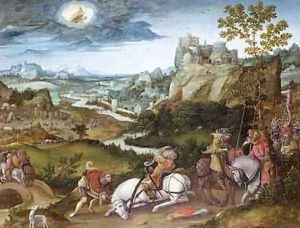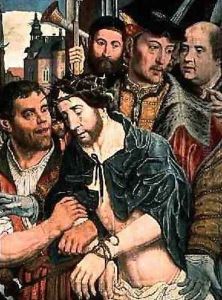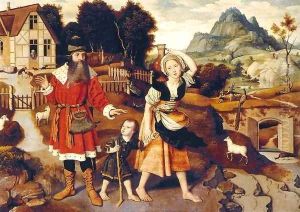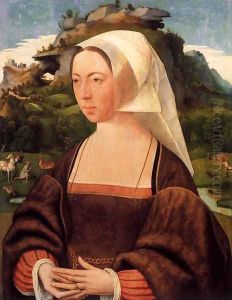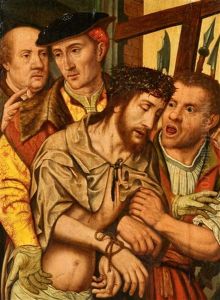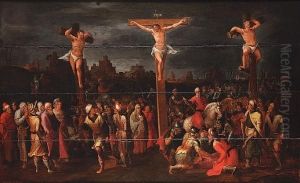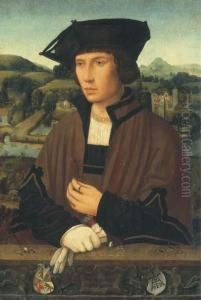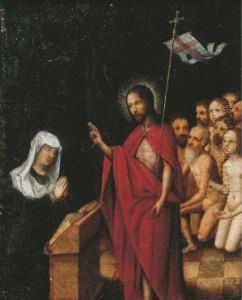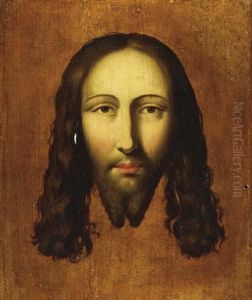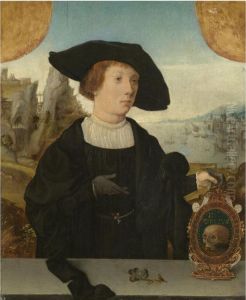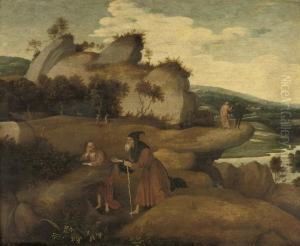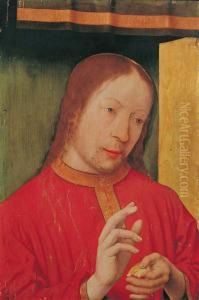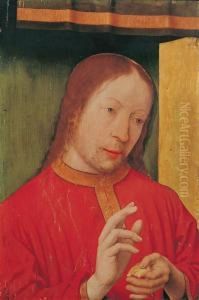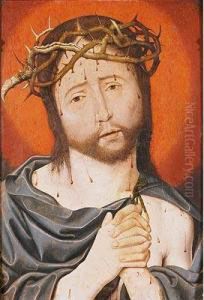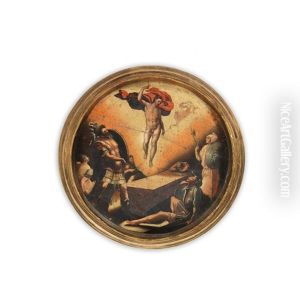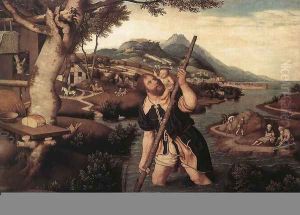Jan Mostaert Paintings
Jan Mostaert was a Dutch painter of portraits and religious subjects, though few of his works have survived. He was born around 1472 in the town of Haarlem, then part of the Holy Roman Empire, and now located in the Netherlands. Mostaert is considered one of the significant artists of the Haarlem School during the early 16th century and served as an important link between the Early Netherlandish painting tradition and the later Dutch Renaissance.
Mostaert's career flourished under the patronage of Margaret of Austria, who was the regent of the Habsburg Netherlands. He became the court painter to Margaret and, through this position, received numerous commissions for portraits, altarpieces, and other religious works. His style was characterized by a strong narrative element, attention to detail, and a clear influence from the Northern Renaissance, with a preference for rich colors and intricate compositions.
The artist's most famous work is the 'Portrait of an African Man,' also known as the 'Portrait of Christophle le More,' which is one of the earliest European portraits to depict an African subject realistically and with dignity. This painting is significant for its historical value in representing a person of African descent during the Renaissance period in Europe.
Mostaert was also known for his landscape backgrounds, which he incorporated into his religious scenes and portraits. These landscapes often depicted the local dunes of Haarlem and showed his keen observation of nature.
Despite his success, Jan Mostaert's life is not extensively documented, and many details about his personal life remain obscure. After his death in either 1555 or 1556, his reputation was eclipsed by the next generation of Dutch painters, such as Frans Hals and later Rembrandt. However, art historians have come to appreciate his work for its contribution to the development of Dutch painting and its reflection of the cultural and social dynamics of his time.
